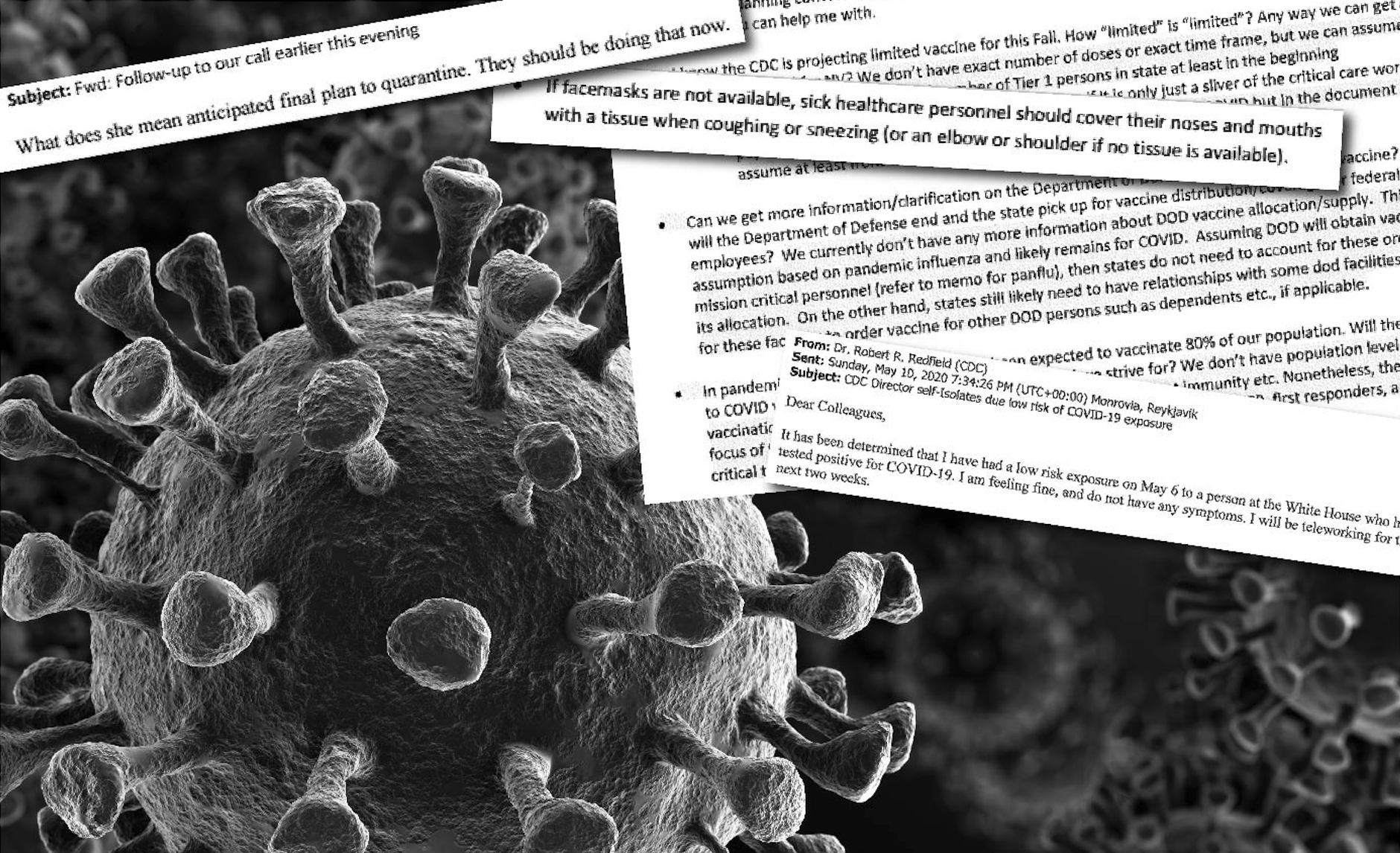In the Documents: Coronavirus-Related Records from Nevada and King County, Wash.
American Oversight has obtained records from Nevada and Washington state that shed some light on the level of coordination among state and federal agencies.

American Oversight’s investigation into the government’s response to the coronavirus pandemic has focused not only on the Trump administration’s actions (or inactions), but also on how state and local governments are addressing the crisis and interacting with federal agencies. Recently, we’ve received records from Nevada and Washington state that shed some light on the level of coordination among agencies.
Washington
King County, Wash., was an early hot spot of the novel coronavirus in the United States, spreading particularly rapidly through the Life Care Center nursing home there. American Oversight requested county officials’ communications with federal agencies, including the Centers for Disease Control and Prevention (CDC), and received documents including early CDC talking points and emails among public health officials at a time when the county was hit hard by the disease.
The documents contain early February guidance from the Washington Department of Health, which lists CDC risk categories that appear to greatly underestimate the risk of virus transmission from people who are asymptomatic. For each risk category — ranging from “high risk” to “no identifiable risk” — the CDC specifies only various levels of contact with “symptomatic laboratory-confirmed” virus carriers. We of course now know that asymptomatic transmission is responsible for the rapid community spread of the coronavirus, which occurred earlier and faster than believed even just a month and a half ago.
Another set of documents are March 1 “weekly key messages” from the CDC that are, predictably, at odds with President Donald Trump’s public statements at that time, as he downplayed and made numerous false statements about the risk. But they also include some indications of the severe shortcomings health-care workers in Washington state would face that month. In one section on “prevention and control for healthcare settings,” the messages advise, “If facemasks are not available sick healthcare personnel should cover their noses and mouths with a tissue when coughing and sneezing (or an elbow or shoulder if no tissue is available)” — an obviously dangerous compromise.
Also on March 1, a King County official emailed a CDC official regarding the outbreak at Life Care Center, asking for clarification on guidance on whether asymptomatic staff who had been in close contact with cases should self-monitor or quarantine, given the relative shortage of staff at such facilities. “The CDC recommendation is to be quarantined at home if someone had close contact with a confirmed case patient,” the CDC official responded, offering another risky compromise. “However, if the county wants to loosen that policy given the shortage of [health-care personnel], perhaps having these asymptomatic contacts wear masks is acceptable. That would be your call.”
Around that same time, Lake Washington Institute of Technology (LWTech) reported that a faculty member and approximately 16 nursing students had been potentially exposed to the coronavirus while visiting Life Care Center the week before. The records obtained by American Oversight include emails with the school’s president regarding plans for those students to self-quarantine. The emails reveal a lack of coordination and miscommunication, with some emails indicating that asymptomatic people could potentially get tested by appointment and others stating that the “CDC does not recommend testing, symptom monitoring or special management for people exposed to asymptomatic people with potential exposures to [the coronavirus].” After LWTech’s president said on March 2 that their “anticipated final plan” was to self-quarantine the exposed students and faculty, one county official said to another official, “What does she mean anticipated final plan to quarantine. They should be doing that now.”
Nevada
Documents from the Nevada Department of Health and Human Services (DHHS) were obtained by American Oversight earlier this week in response to our request for communications with the CDC regarding the pandemic. The records are mainly from late April and early May 2020, and include part of an early draft of guidance for “reopening” the country. They also include a May 10 email from CDC Director Robert Redfield notifying staff that he’d had low-risk exposure to the coronavirus from someone at the White House (possibly the vice president’s press secretary, Katie Miller) and that he’d be teleworking for the next two weeks.
There are also some email exchanges about a vaccine potentially becoming available for limited distribution in the fall. On April 23, CDC official Tai Baker circulated a message from a CDC doctor referencing the vaccine candidates that were at the time in Phase I trials in the U.S. The message said, “While we do not know when a COVID-19 vaccine(e) will be available, there could be a limited supply of vaccine as early as this fall. Therefore, it is imperative the public health community prepares now to effectively and safely administer vaccine as soon as it becomes available.”
Less than a week later, an immunization program manager at the Nevada DHHS sent a number of questions to Baker regarding the quantity and distribution of any early vaccines. “I know the CDC is projectiving limited vaccine for this Fall. How ‘limited’ is ‘limited’?” They also asked for clarification on coordination with the Department of Defense regarding supply for federal employees. “We are needing more concrete guidance about the DOD facilities that will be obtaining their own vaccine.”
Baker’s response was that the CDC did not currently “have any more information about DOD vaccine allocation/supply. … [S]tates still likely need to have relationships with some dod facilities in order for these facilities to order vaccine for other DOD persons such as dependents, etc.”
American Oversight’s investigation of the Trump administration’s coronavirus response has been looking into how outside entities might be influencing development of treatments and vaccines for the coronavirus, and we will continue to monitor how the federal government coordinates with states and localities in addressing the current public health crisis.